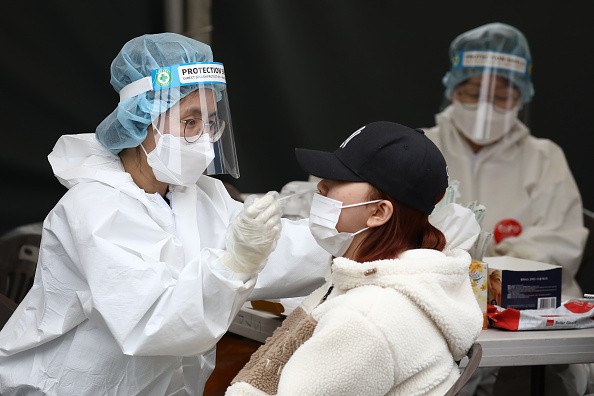The COVID-19 incidence and mortality rates have been decreasing in the United States for many weeks as the omicron surge fades away.
However, the Centers for Disease Control and Prevention reports that a novel subvariant of omicron, BA.2, sometimes called as "stealth omicron," is spreading.
The BA.2 Omicron subvariant of the Covid-19 coronavirus has recently been identified as spreading and spreading and spreading.
Data shows that the BA.2 may now account for over 1/4 of all new Covid-19 cases in the United States.
The 'stealth variant' of COVID-19 omicron variant

According to the Centers for Disease Control and Prevention's (CDC) Covid Data Tracker, the BA.2 subvariant first appeared in sequenced data from patients in the United States in January 2022.
On polymerase chain reaction (PCR) tests, the BA.2 subvariant might be difficult to differentiate from the Delta variant, unlike the BA.1 and BA.1.1.529 Omicron subvariants.
Back in January, when the Delta variation was still being discovered in patient samples, it was a probable case of mistaken identification.
According with American Medical Association, BA.2 is a subvariant of COVID-19's omicron variant.
Scientists have dubbed it "stealth" omicron because that contains genetic changes that may make it more difficult to differentiate from the delta variant utilizing PCR testing when compared to the previous form of omicron.
BA.2 was found in only around 1% among all severe acute respiratory syndrome coronavirus 2 (SARS-CoV-2) specimens from patients across the nation that were subjected to genetic testing throughout the week ending February 5, as per Forbes.
Can BA.2 causes more severe disease?
According to abc Denver, there is contradictory research when Japanese researchers tested BA.2 on hamsters, they noticed that the subvariant caused more serious disease than omicron.
However, two different investigations from Denmark and South Africa found that BA.2 had comparable hospitalization risks as the initial omicron strain.
Another surge of COVID-19 cases?
Scientists are hopeful that the United States will be protected from another omicron surge.
They also expect that millions of Americans who have recently experienced omicron infections will be resistant to BA.2, and that antibody rates will continue to increase as more people seek vaccines and boosters.
However, COVID-19 is making a comeback in other nations, most notably China, which is experiencing its largest outbreak since the virus initially arose in Wuhan.
COVID-19 instances are also increasing in France, Switzerland, Italy, and the Netherlands.
However, things are not the same as things were in 2021.
A bigger proportion of people could have some level of immunity to the Covid-19 coronavirus.
Granted, 65.3% of the US population has been fully vaccinated, and 44.4% has been boosted against Covid-19. However, in this case, higher is preferable.
Data show that vaccination with Covid-19 against by the BA.2 subvariant is as effective as immunization with the BA.1.
On March 10, for example, throughout the United Kingdom, three doses of Covid-19 immunization were around 69% effective against acute Covid-19 induced by the BA.1 at the 2-week mark following the last booster dose according to the UK Health Security Agency.
When the booster dose was administered over than 10 weeks ago, those rates fell to 49% and 46%, respectively, which is still another reason why keeping extra Covid-19 measures might be beneficial.
© 2026 NatureWorldNews.com All rights reserved. Do not reproduce without permission.





